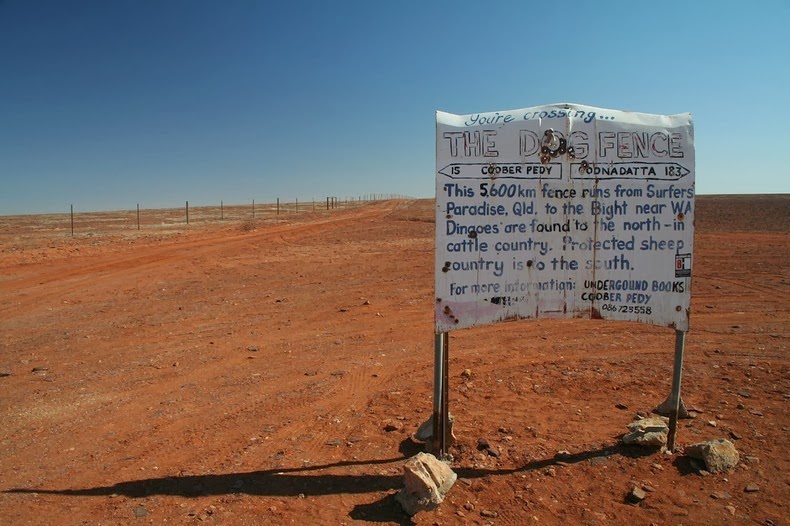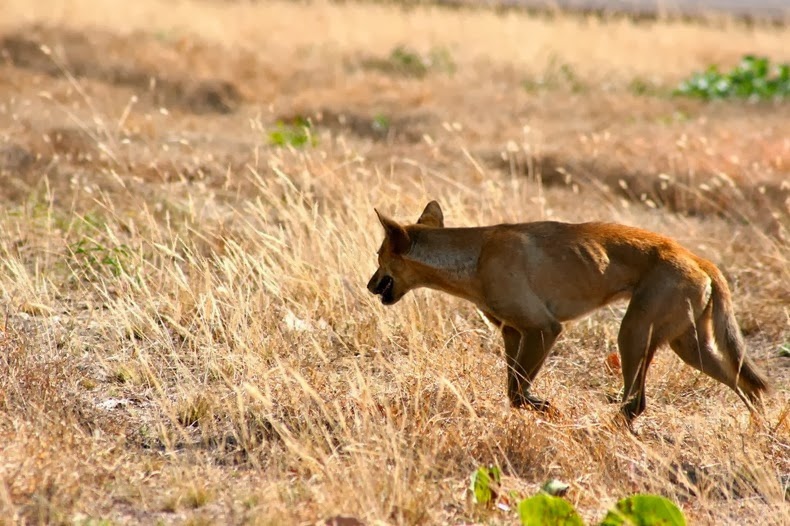The Dingo Fence or Dog Fence is a long fence that stretches from Jimbour on the Darling Downs near Dalby through thousands of kilometers of arid land ending west of Eyre peninsula on cliffs of the Nullarbor Plain. The fence was built in the early 1900's to keep dingoes or wild dogs out of the relatively fertile south-east part of the continent where sheep and cattle graze. At 5,614 kilometers, it is one of the longest structures in the world and the world's longest fence.
The fence was originally built in the 1880’s by State governments, initially to stop the spread of the rabbit plague across State borders. This proved to be a wasted effort and the fences fell into disrepair until the early 1900s when they were repaired in order to keep the dingoes out and protect the sheep flocks. In 1930, an estimated 32,000 km of dog netting in Queensland alone was being used on top of rabbit fences. In the 1940’s, the fences were joined together to form one continuous structure, which was recorded as the longest fence in the world. Until 1980, the fence was 8,614 kilometers long, but was then shortened to 5,614 kilometers.

The fence has been partly successfully over the years, though dingoes can still be found in parts of the southern states. The fence is maintained via its different states and councils to this day, at an approximate cost of 10 million dollars per year. Some parts of the fence is illuminated at night via solar panels feeding high output lights. The fence construction varies along its length, but generally it stands about 180cm in height and consist of miles upon miles of wire mesh clamped to timber posts. There is also an exclusion zone of about 5 meters on either side that is cleared of vegetation and is generally used as a track for service and maintenance.
Although the fence has helped reduce the loss of sheep to predators and save millions of dollars each year, it’s impact on the environment is hotly debated. Basically, the fence has created two ecological universes – one with dingoes and one without, contributing to the demise of some native animals and the endangerment of many more. Exclusion of dingoes has allowed for increased population of rabbits, kangaroos and emus, while native rodents, marsupials and grasses were all diminished.
On top of that, there is also debate on the actual native classification of the Dingo. Many believe that the Dingo is not a native to Australia but was introduced some 4000 years ago from South East Asia. Therefore it is an introduced pest like the rabbit, camel, buffalo and feral pig. In fact, land managers in most States and Territories are compelled through legislation to destroy wild dogs, including dingoes, on their land.
According to Dr. Mike Letnic, of the University of Sydney, the dingo, as Australia's top predator, has an important role in maintaining the balance of nature and that reintroduced or existing dingo populations could increase biodiversity across more than 2 million square kilometers of Australia.

Sources: Wikipedia, Thargotourism, Digidrift, BBC, Cosmomagazine


















Australians, tear down that wall of shame!
ReplyDelete